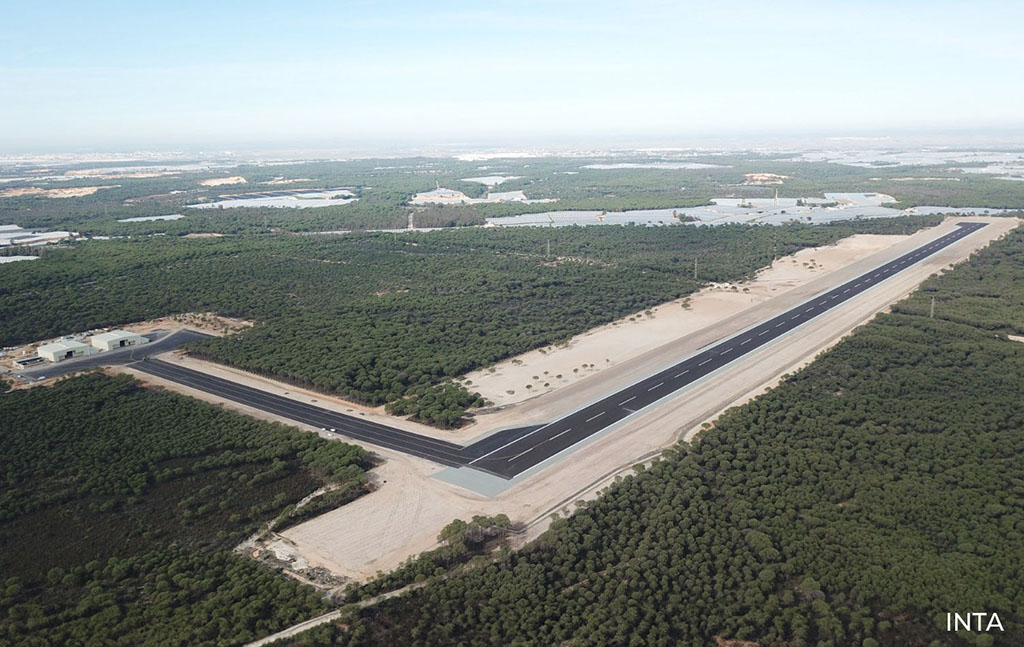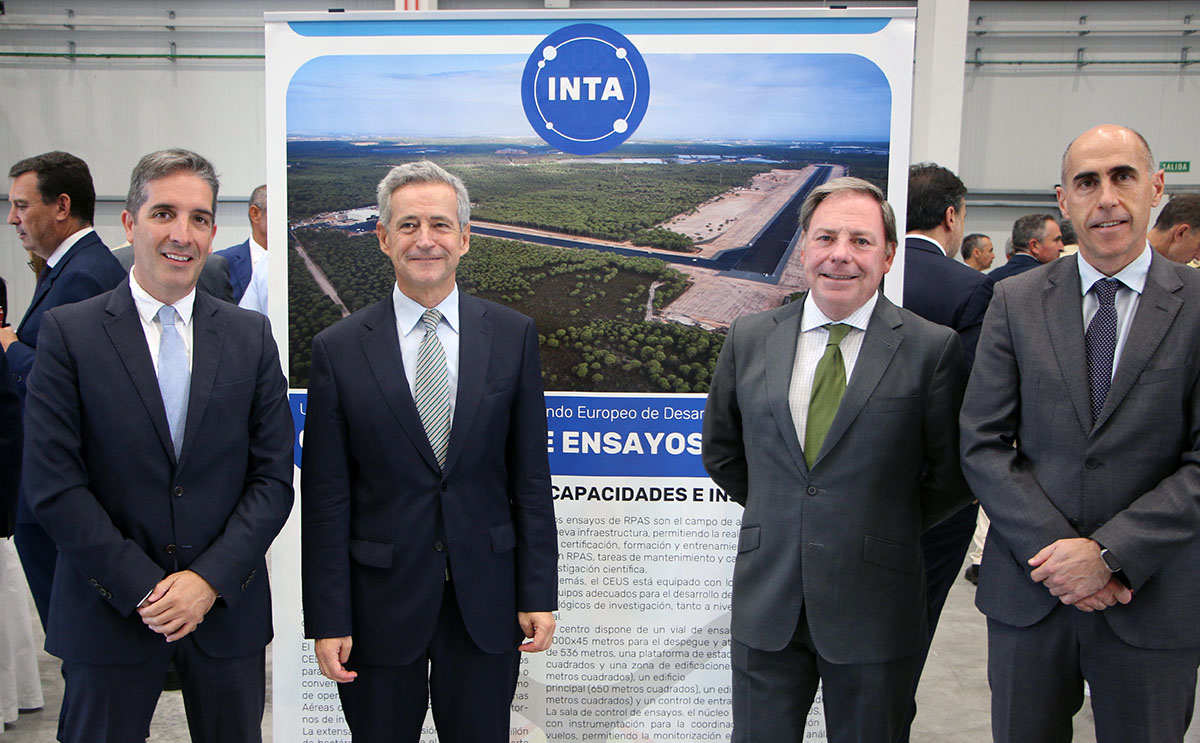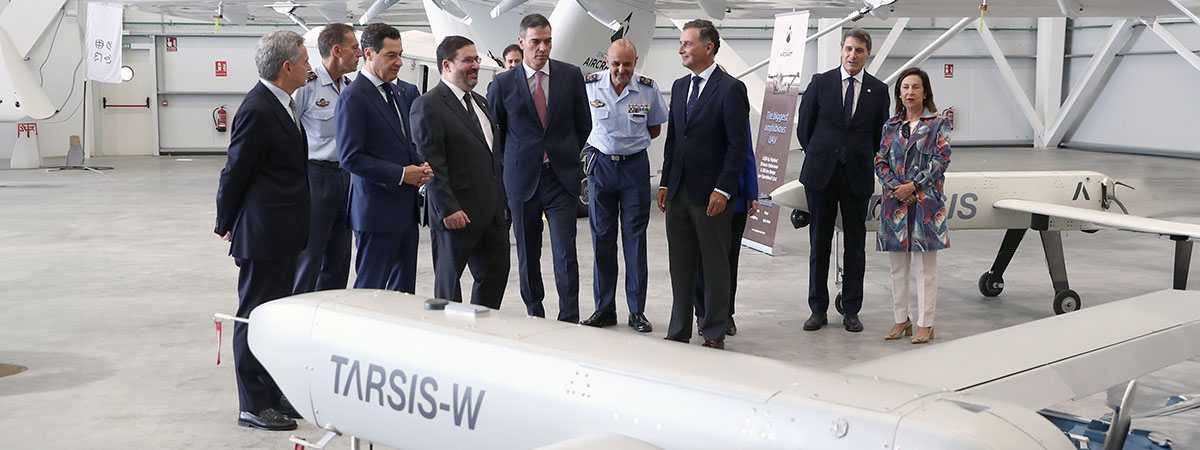AERTEC attended the opening ceremony of the unmanned aircraft testing and research centre – aka the CEUS – in Moguer (Huelva), taking the opportunity to display its largest fixed-wing aerial platforms, the TARSIS ISTAR and TARSIS-W, for which it is the design authority and manufacturer. AERTEC, whose Airports Division was involved in designing the CEUS airfield from the start of the project, shares the interest shown by other large companies in using its facilities in the future.
AERTEC’s representatives were highly positive about the National Institute of Aerospace Technology’s (INTA) new facilities, stressing the strategic importance that they will have for the development of the aerospace sector throughout Europe and, in particular, in Spain and Andalusia
The opening ceremony was attended by Spain’s Prime Minister, Pedro Sánchez, the President of the Regional Government of Andalusia, Juan Manuel Moreno, the Minister of Defence, Margarita Robles, the Secretary of State for Defence, Amparo Valcarce, and the Director of the National Institute of Aerospace Technology (INTA), Lieutenant General Julio Ayuso, as well as other civil and military authorities and officials from the INTA and the Arenosillo Test Centre (CEDEA). AERTEC was represented at this event by its CEO and founder, Antonio Gómez-Guillamón, who was accompanied by Pedro Becerra, General Director of the Aerospace and Defence Systems Division, and Rafael Márquez, Operations Director.
 The CEUS project is part of the CEDEA – Arenosillo Test Centre – located just a few kilometres away, and together they now form the best European Centre of Excellence for Unmanned Systems (UAS, RPAS, drones) and stand at the forefront of global unmanned vehicle testing. AERTEC’s CEO, Antonio Gómez-Guillamón, provided a first-hand insight into the capabilities of these TARSIS, which have a take-off weight of 95 kg and 120 kg and are suitable for dual-use intelligence, surveillance and reconnaissance missions.
The CEUS project is part of the CEDEA – Arenosillo Test Centre – located just a few kilometres away, and together they now form the best European Centre of Excellence for Unmanned Systems (UAS, RPAS, drones) and stand at the forefront of global unmanned vehicle testing. AERTEC’s CEO, Antonio Gómez-Guillamón, provided a first-hand insight into the capabilities of these TARSIS, which have a take-off weight of 95 kg and 120 kg and are suitable for dual-use intelligence, surveillance and reconnaissance missions.
“The Spanish aerospace industry is becoming increasingly important in the sector because it is developing cutting-edge, innovative technology, with an ever-bigger part to play and a key role in the advances that are taking place across Europe. We believe that the TARSIS UAS series clearly demonstrates the capabilities that are currently available in Spain to develop unmanned aerial systems, covering the entire design and manufacturing cycle, and their associated technological solutions, which are marking the future of the sector”, remarked Gómez-Guillamón.
AERTEC’s CEO, who is also President of the Andalucía Aerospace Cluster, took this opportunity to congratulate the officials from the INTA CEUS, and the Spanish and Andalusian aviation industry as a whole, on the launch of these facilities, which are destined to become a leading centre in Europe. On this latter point, Pedro Becerra added that “the CEUS’s new runway and facilities for large fixed-wing aircraft operations will be essential, not only for certifying new unmanned aerial systems capabilities in the future, but also to allow Andalusia to host European programmes such as Eurodrone or FCAS, thanks to the outstanding infrastructure provided by this project”.
 AERTEC’s role
AERTEC’s role
AERTEC has been working alongside the National Institute of Aerospace Technology (INTA) for several years at its facilities at the Arenosillo Test Centre (CEDEA), where it has carried out testing and flight campaigns with its TARSIS unmanned aerial platforms.
AERTEC’s Airports Division also played a pivotal role in this project from its inception, providing know-how in high-performance UAS operations. Also, as a company that specialises in the planning and design of airfields and airport infrastructures, it was also involved in various phases, creating the conceptual design of the airfield, which has been designed to develop and test all types of UAS, whatever their size.
The CEUS UAS Test Centre is a facility for the advanced testing of MALE (medium-altitude, long-endurance) and HALE (high-altitude, long-endurance) UAS. It has a 2,000 m x 45 m paved runway, an apron equipped with up to 4 areas to set up ground stations, two hangars and a multi-purpose building. It also has ancillary, maintenance, refuelling, security, etc. facilities. Thanks to its collaboration with the INTA-CEDEA, the centre is authorised to use one of the largest restricted flight areas in Spain, with direct access to the Atlantic Ocean and no height limit.


